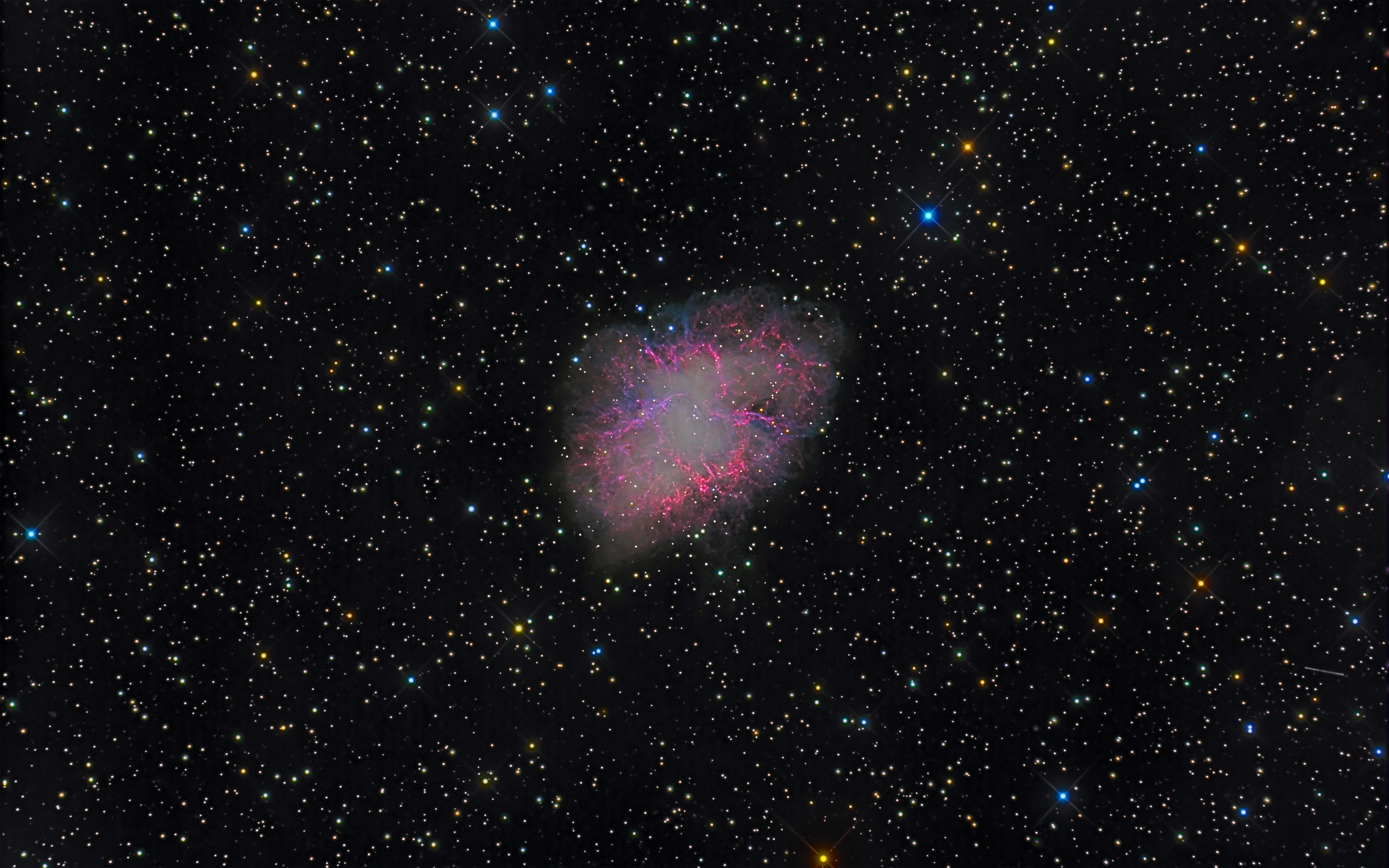The Crab Nebula or
M1 is what remains of an ancient supernova and is
one of the first pulsars ever identified. It lies in the
direction of the constellation Taurus and is the first object
ever associated with an historical supernova. While it was
discovered by English astronomer John Bevis in 1731, it wasn’t
until the early 20th century that astronomers discovered that it
seemed to be expanding, indicating a relatively recent
supernova. In fact, on July 4th, in the year 1054, Chinese
astronomers recorded a new star in the same part of the sky as
the Crab Nebula. That new star was bright enough to be seen
during the day. A sudden new “star” recorded in ancient history,
usually means either a comet or a nova. In fact, the word “nova”
means “new star”. Nova happen whenever an old star suddenly
brightens as it throws off material into space, often a result
of collecting this material over time from a nearby younger
star. A nova does not usually destroy the star.
A supernova,
however, occurs when a star reaches the end of its life and
explodes in one of the most violent events in the universe. A
supernova’s progenitor star is then greatly changed and often
destroyed in the process. Most supernova then become a neutron
star or if massive enough, a black hole. A neutron star is a
gigantic atomic nucleus, tens of kilometers across. It is held
together by gravity and so dense that it contains only neutrons
with protons and electrons combining during the supernova in
extreme gravity and explosive conditions. Neutron stars are so
dense that a teaspoon of its material weight several billion
tons.
When many stars collapse to form neutron stars, like that
figure skater pulling their arms in during a spin, the star
spins faster and faster during its collapse. This may form a
pulsar in which charged particles, accelerated to relativistic
speeds, cause a kind of wind and a standing shock wave. The Crab
Nebula contains such a pulsar as indicated in the above and
below images. It was originally a normal star, over a million
kilometers in diameter, however now, due to its supernova, it is
only 28-30 kilometers in diameter, but spins at over 30 times
each second. In the image below you can more clearly see this
pulsar and some surrounding shock waves caused by the pulsar
wind. This pulsar lights up the crab nebula with a ghostly
bluish-white color. The red filaments are the remnants of the
original star’s atmosphere and contain ionized helium and
hydrogen along with some heavier elements.
Since the Crab Nebula
is so close the ecliptic (the plane in which the earth, moon,
and all planets orbit), many solar system objects visually come
close to the nebula during their orbits as seen from earth. In fact, Saturn passed in
front of the Crab on January 4, 2003. In the image above,
another solar system object is visible, and came very close to
transiting M1, a couple days after this image. The object is
identified as Asteroid 3409 Abramov. It is a stony Koronian
asteroid about 11 kilometers in diameter, and orbits in the
outer main asteroid belt between Mars and Jupiter, taking about
5 years to orbit the sun. Ironically it is not much smaller than
the Crab Pulsar. However, at an average of 400 million
kilometers away from us, 3409 Abramov is quite close compared
the Crab which is 6500 light years away (150 million times
further away that the asteroid). Click on the above image, zoom
into the asteroid line caused by it moving during exposures and note
the gap in the line. This was the 3-5 minutes it takes to flip the
telescope mount when passing the meridian.



